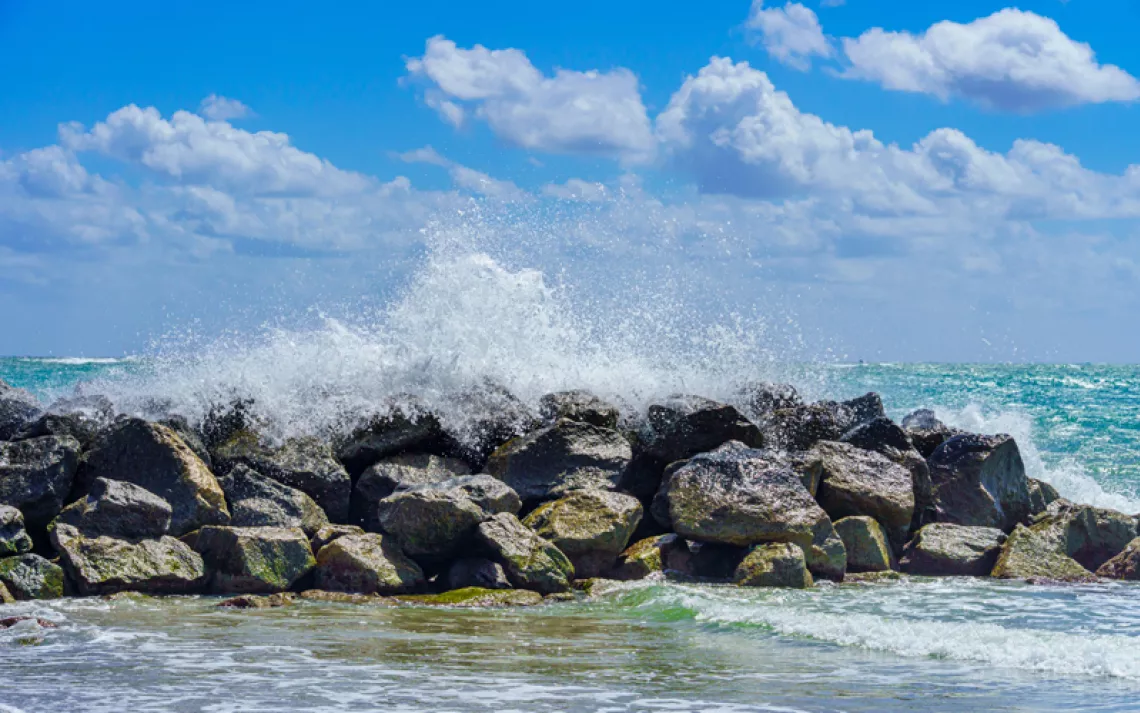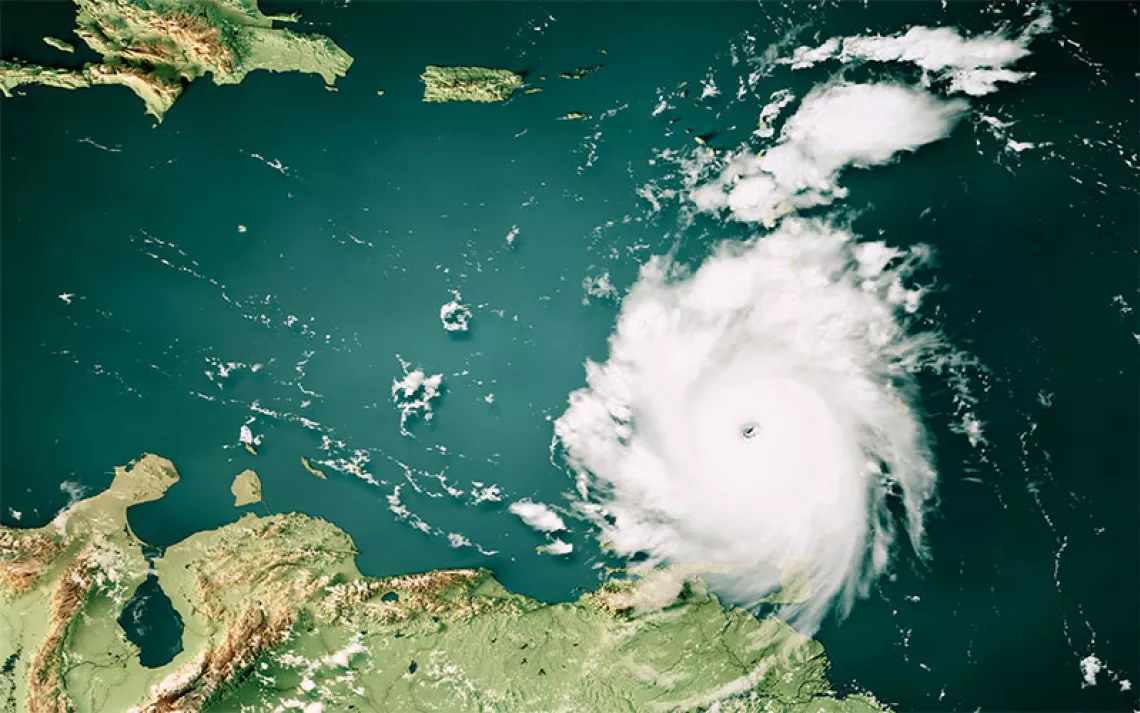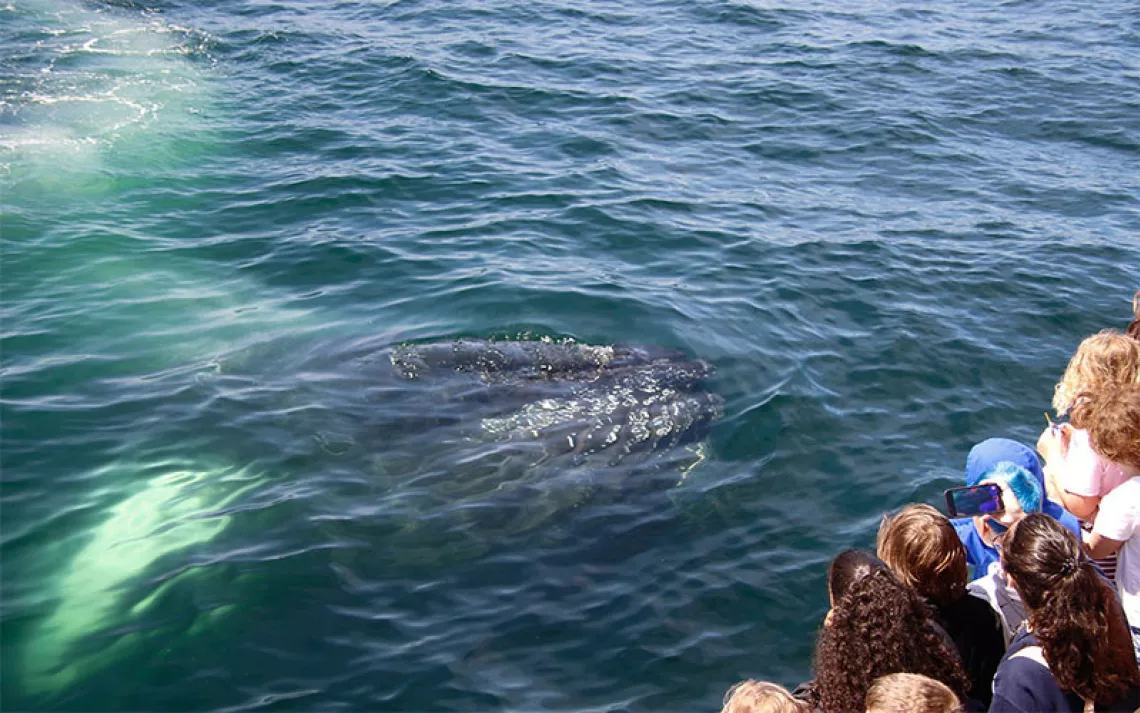Fishing While Female
The checkered history of a late-blooming obsession
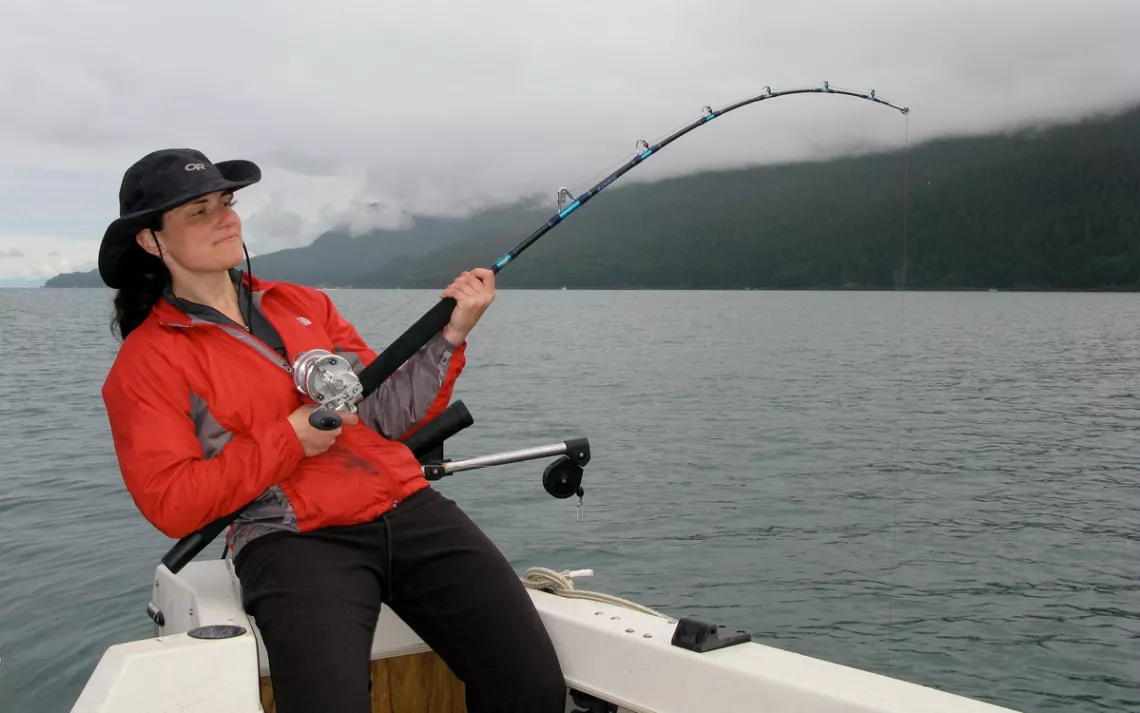
Photo courtesy of Kate Golden
The prologue to my fishing career took place at a vegetarian co-op in college. My housemate Meg’s ex-boyfriend in Alaska had FedExed her several carefully wrapped sockeye salmon as a sign of his love. This sparked a house discussion on whether it was acceptable to cook fish on a vegetarian co-op grill. The fish-eaters won the day, and I never forgot it: sweet char outside, delicate flakes of fatty red flesh within.
A couple of years later, Meg moved to the salmon-and-halibut town of Valdez, Alaska, and at her invitation, I followed. I became a stringer for the two-person Valdez Vanguard. With no journalism training, I was not overburdened with a sense of responsibility to uphold the public’s right to know; I only bothered with what I wanted to know. Thousands of salmon were returning to Valdez’s hatchery—the whole town stank of them. And as I was getting paid 15 cents a word, I was hungry.
I arranged to do a photo essay at the hatchery. I watched big fish swim up a tube and end up on a conveyor belt, where people in rain gear gutted them. The females were stripped of their roe, which went to make more hatchery fish or to be brined for ikura and sent to Japan. Their bodies continued on, with those of the worthless males, along the belt, out of sight. Out back the fish landed in a giant tub, destined for either trash or pet food. I was scandalized at the waste.
I asked around: Would anyone mind if a tiny fraction was redirected? I got some odd looks but no objections. I borrowed Meg’s Volkswagen Rabbit, lined the back with garbage bags, and backed it up to the end of the conveyor belt. I bought a fillet knife. I headed to a fish-cleaning station at a nearby boat ramp, and attempted to recall the steps I’d seen taken by a Valdez man who performed for cruise ship passengers by filleting a salmon in under 60 seconds. After three or four fish, I began to get the hang of it. More odd looks, from passing grizzled fishermen. I assumed they were jealous at the tremendous luck of this fresh young lady. I proudly took my fish to a processor and had them packed and frozen: My winter supply!
It was a bit later that I learned how, near the end of their journey, salmon turn into the swimming dead. These fish were not appreciably worse than much of the salmon often served even now in the Lower 48, but in Alaska they are not fit to be eaten; only to be rolled in by bad dogs. However, I had to learn by eating—my usual method.
It was also a little later that I learned the daily bag limit was two fish, which explained the shoreside looks.
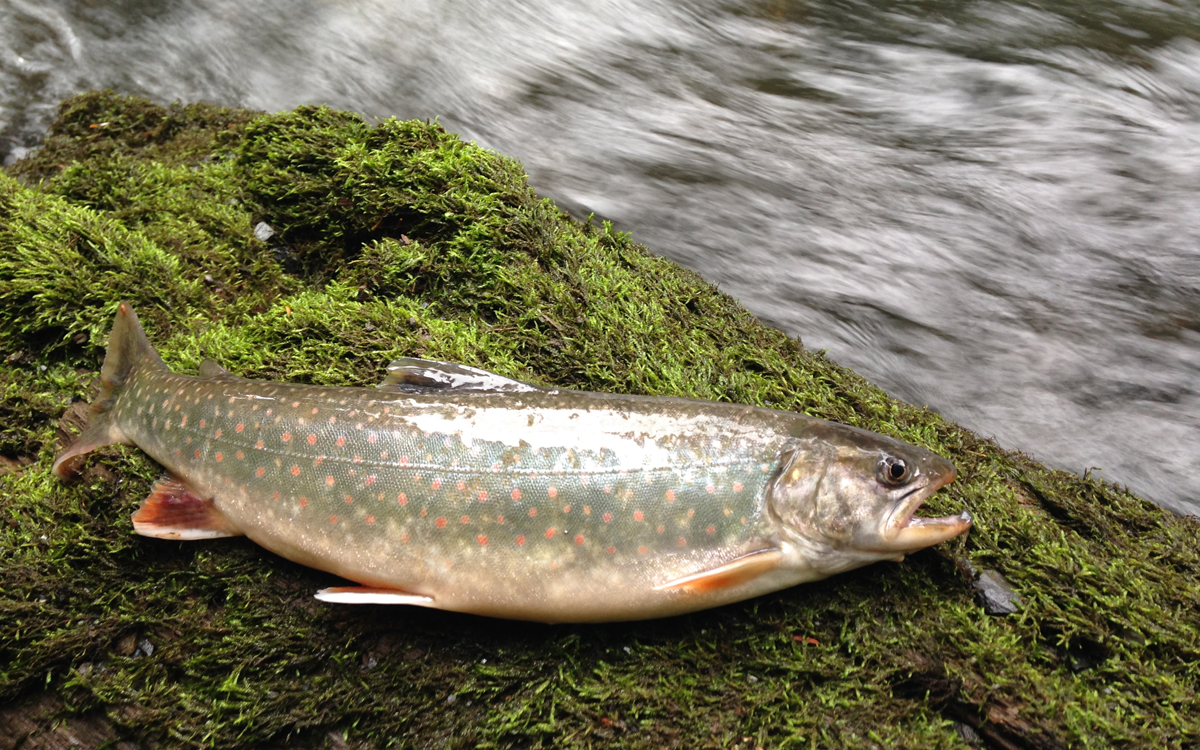
Alaska brook trout | Photo courtesy of Kate Golden
It never occurred to me that I could fish for myself in Valdez. My childhood fishing experience consisted of the yearly crabbing my family did off a Chesapeake dock. We would drop a chicken neck tied to a line and pull it up so slowly that any hypothetical crab would be too busy chowing down to notice. We were creatures of suburbia, not the seashore, and we never caught much.
In the Valdez that I knew, commercial fishing was done by nimble young bucks clambering over boats that were covered with gear. Sport fishing was done on fast boats by wealthy bros from Michigan or Arizona who checked in stacks of Styrofoam boxes at the airport when they left. I left for graduate school in California having eaten heaps of beautiful salmon, all caught by other people, nearly all men.
Why did I assume fishing was mainly for men? Maybe because it is, at least empirically. The most recent official U.S. survey of recreational fishing efforts reports that women made up 27 percent of the 24.2 million American anglers in 2011. I might blame the marketing. Tackle shops surround you with the idea of fishing as war. You are battling a monstrous foe—an overwrought violence I find both repellent and comical. But the main reason, I suspect, is a self-perpetuating lack of critical mass. Women don’t fish because other women don’t.
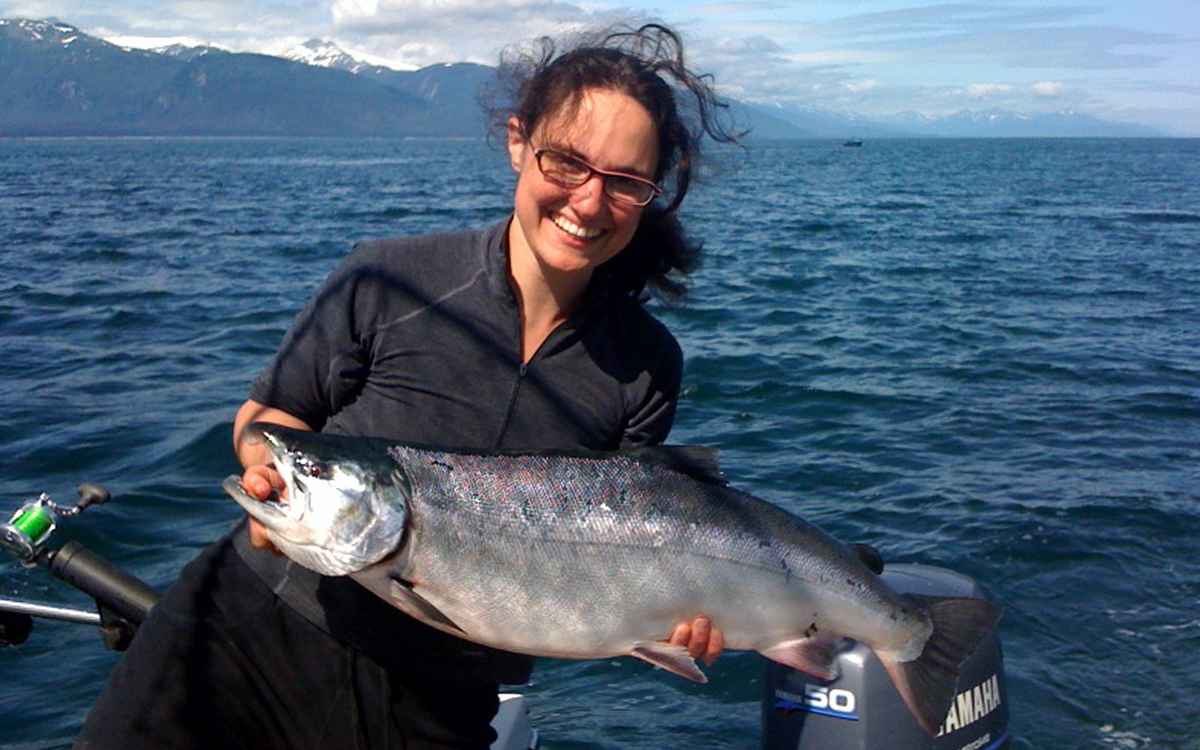
Photo courtesy of Brian Wallace
I returned to Alaska for a kayak trip out of Sitka. A couple of weeks in, paddling at night to a public cabin on an island, I shined a light into the water and saw an underwater jungle, with huge silver beasts weaving through thick green kelp. The ocean came alive with delicious possibilities.
For some reason, I had a little tackle box but no rod. The next day, I tied a lure to some line, attached that to a spare half-paddle, and dropped it from my kayak, just as an experiment. Almost immediately, I felt a tug. I pulled it up, wrapping the line around my arm. A black cod wriggled at me. I smacked it with my paddle and dropped it in my lap, and it was not the only one who was hooked. Black cod is a fatty fish. Gently sauteed in olive oil and garlic, it flaked into large, silky white chunks. Along with the taste, I recall a rare immense feeling: of fortune, fullness, and perfect well-being.
When I moved back to Alaska for work, I bought my first fishing rod. It was princess-themed and pink, and at $9, it was the cheapest rod at the Juneau tackle shop. I took it fishing most summer days and even, occasionally, during my lunch hour at work, until it fell apart. I caught a lot of fish: mostly Dolly Vardens and arctic char. Dollies have a delicate pink flesh like a cross between their trout and salmon cousins. They’re common as hell and bite anything shiny, which may explain why they are underrated as a sport species—not enough of a challenge.
Occasionally I would go out on the water with my friend Brian, a Tlingit guy who shared my obsession but had far more knowledge, skill, and gear. The deal was, Brian drove the boat and set the bait; his companion provided lunch, luck, and brawn. For several years Brian made a calendar of his hardy-lady fishing partners, resplendent in baggy jackets and grins, holding big silvers or halibut. I am Miss May, 2010. I heard a few men grumble about the fact that Brian almost exclusively fished with women. But, bless him, Brian’s done his share of empowering women to realize we, too, can reel in a big halibut and educating us to know the smaller ones taste better.
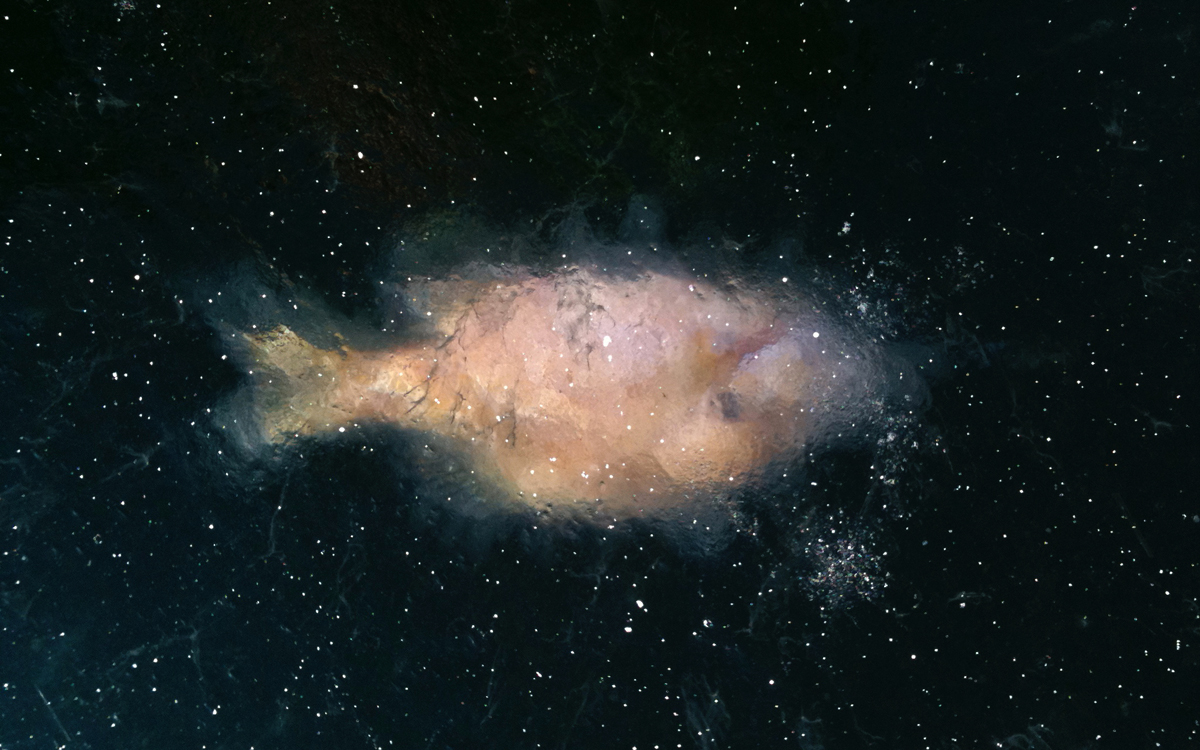 Bluegill trapped in the ice of Lake Monona | Photo courtesy of Kate Golden
Bluegill trapped in the ice of Lake Monona | Photo courtesy of Kate Golden
Alas, I soon moved to Wisconsin, where the fish were smaller and scarcer. And as I learned in my work as an investigative journalist, the water was often polluted with human waste, cow manure, or urban or industrial runoff. The fish themselves might bear PCBs, dioxins, mercury, flame retardants, and any number of other potentially endocrine-active chemicals in their flesh—mostly more of a problem for the fish than for me, but still.
I did a bit of ice-fishing for bluegills right in the middle of Madison. Lake Monona became a small city unto itself when it froze over, covered with little pop-up shacks and men sitting on buckets. The buzz of new fish holes being drilled by electric augurs filled the air. Superstitious fishermen were always moving to a new hole a few feet away, which meant I could go out there with the bare basics (rod, mealworms, bucket, beer) and use one that had just been abandoned. But bluegills and the rest of what Midwesterners call “panfish” were a bit of a come-down from the princely feasts of Alaska. So I got into other local activities, like hunting for deer and mushrooms. An obsession went dormant.
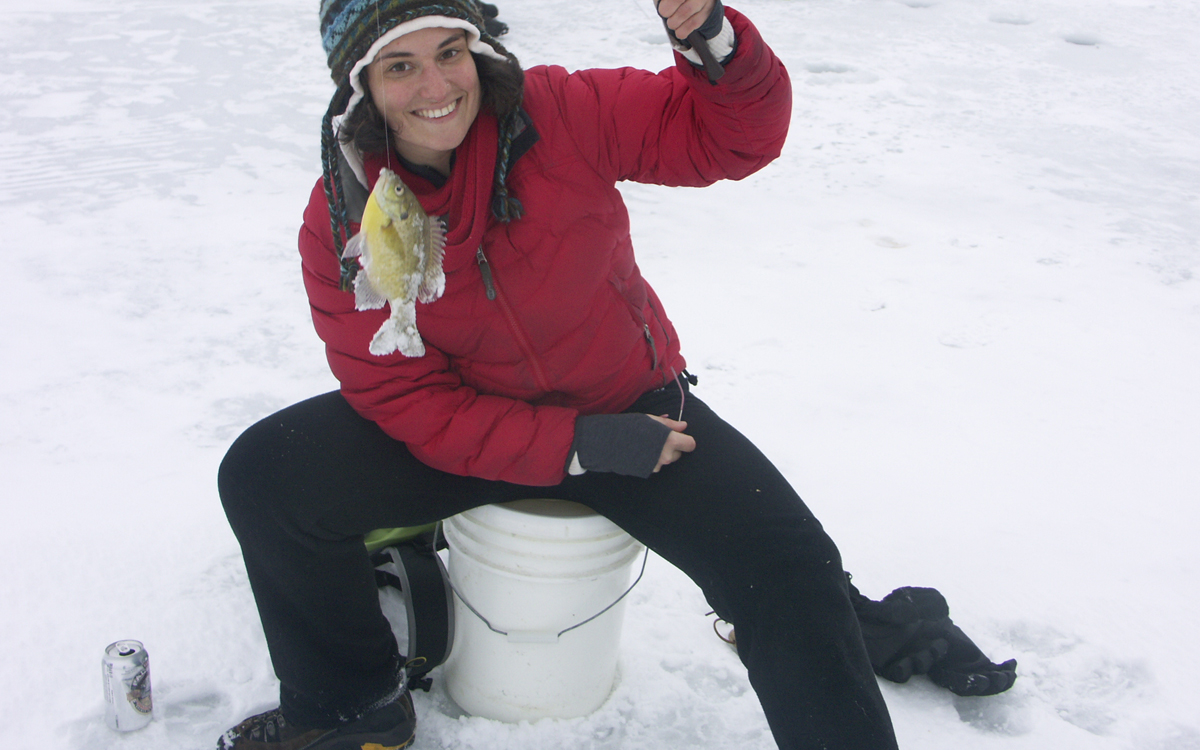
Ice-fishing on Lake Monona | Photo courtesy of Kate Golden
The prospect of catching a lot more fish was a major factor in my move, this year, to a small sailboat in Sydney, Australia, where I am preparing for my first big ocean passage, to New Caledonia. My appetite for voyaging was whetted by a lot of classic sailing memoirs. I always look forward to the fish parts of such books, and I hoped to fare as Joshua Slocum did back in 1895, when he was sailing Spray alone around the world:
(W)hat I lacked of fresh meat was made up in fresh fish, at least while in the trade-winds, where flying-fish crossing on the wing at night would hit the sails and fall on deck, sometimes two or three of them, sometimes a dozen. Every morning except when the moon was large I got a bountiful supply by merely picking them up from the lee scuppers. All tinned meats went begging.
Solo cruiser James Baldwin had a similar experience circumnavigating the globe in the 1980s:
As I reclined in the leeward bunk, with my head propped up against the galley cabinet, a flying fish shot through the companionway hatch, hit the cabin house side above the galley, and fell—yes—fell, right into the frying pan sitting on the gimbaled stovetop. We both lay as we were, momentarily stunned.
But in the decades since these voyages, our voracious appetites have emptied the oceans of so much fish. Fishery after fishery collapses. Few stocks benefit from the sort of precision and boatloads of money that are spent managing Alaska’s salmon. Was I mistaken in assuming the ocean would support me? Worried, I consulted with my friend Loic, a Frenchman who sailed the Atlantic in a small boat before he half-civilized himself and got a PhD in ecology. Were there, in fact, plenty of fish in the sea?
“I got to the point where first I would start making the rice—and then put out my line!” he said.
Usually it would be a big dorado, a.k.a. mahimahi. Loic would hack it into three big steaks, throw it in his pressure cooker with a can of tomatoes and a roughly chopped onion, and cook it for 20 minutes. He told me this over a Breton gratin of cod that he had poached in medieval spices like cloves and saffron, then mixed with potato and cheese, until it was thick, smoky, and spicy. I was heartened and ready to make my own.
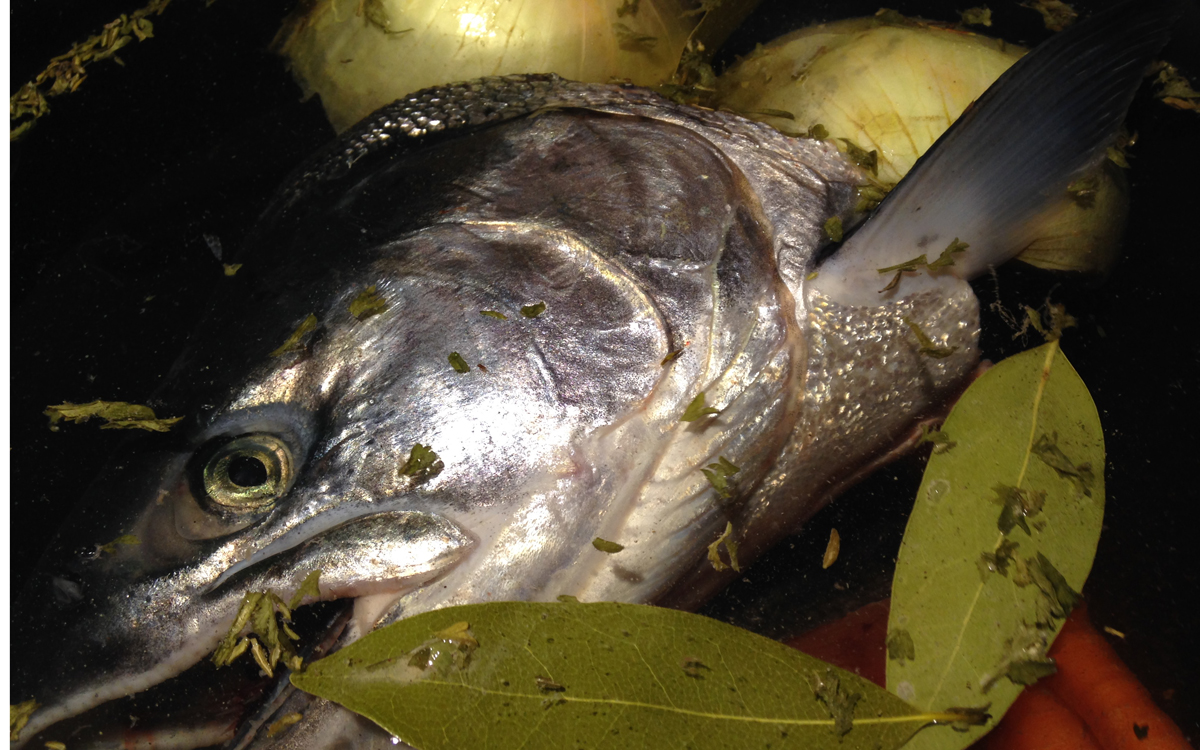
Fish soup | Photo courtesy of Kate Golden
Recently, I spotted a flyer at the library in Randwick, a Sydney suburb: “Free Rockfishing Workshop,” it said. “Learn to catch more fish.” I wondered how much of it had to do with catching more fish and how much it had to do with Randwick’s top ranking for rockfishing fatalities in New South Wales. The coastal suburb is lined with cliffs and rocky outcroppings that are perfect for catching fish but also for drowning, especially sans lifejacket. But I signed up anyway. As I waited for the date, I imagined myself reeling in a silver snapper from a high cliff at sunset. Sometimes, I would be working on the internet and find the Sydney Fish Market’s remarkable recipe collection had somehow appeared in front of me.
At a banquet hall on the shore, some 75 other fishers, nearly all men, joined me to soak up the wisdom of a professional rockfishing guide of YouTube fame. We sat through an hour-long safety lecture, and then the guide stood in dim light demonstrating how to bait a garfish on a hook no one could see. Then we all lined up for free lifejackets and it was over.
I asked the guide if he could recommend the cheapest possible rockfishing setup for a novice like me. He enthusiastically offered to email me suggestions.
But what he actually wrote to me is that he didn’t think I should go rockfishing. He thinks I should fish from docks for little fish like bream. Rockfishing, he said, is too dangerous.
I imagined him saying this to a man.
Defiant, indignant, I told my husband, “What I really want to try is spearfishing.”
He came home two days later with a present: Two cheap polespears, $25 each, labeled “TOURIST”—the spear equivalent of my old princess rod. It’s not one of those fancy underwater guns. Just a pole with a thick rubber band on the end.
My first outing was to a local bay where I had seen lots of fish while snorkeling. The spear was easy to swim with but hard to shoot. The swell was throwing me around. A school of ludericks flitted past—they’re a good-size eating fish, but way too fast for me. Some whiskered codlike creatures lazed on rocks looking more my speed. But their blasé attitude made me suspicious that they weren’t delicious. I left the water empty-handed, blue-footed from cold, but uncowed.
Over coffee at the end of the day, I told my husband, “I can’t stop fishing until I’ve caught something.”
He looked at me curiously. “So what you’re saying is, you think you’re still fishing.”
“Right,” I said. “I’m just on a break.”
A week later, we found a calmer, clearer cove. This time, I took lots of shots. I missed, but gradually the misses become nearer. When I dove down to investigate under a rock shelf, and from the dark I saw two large eyes looking at me. I shot without hesitation and swam back with my heavy prize, a cuttlefish longer than my forearm. It glimmered red and amber and green as it died and waved its tentacles. I was sad to kill such a magnificent thing. But also, I was hungry. This creature would feed six people at least, including my friend Loic.
A woman came over to watch as I cleaned the cuttlefish and turned a tide pool black with ink. She was delighted and curious, examined the cuttlebone unsqueamishly. “Was it hard to catch?” she asked. “Easy!” I said, and walked her through the little I knew about spearfishing so far. Maybe she would be emboldened to head to the tackle shop, buy herself a cheap spear, and acquire a new obsession.
TIPS
Hunger is all you need to start fishing. But I can throw in some advice, in case it helps:
The difficulty of fishing is often exaggerated by marketers selling expensive things. Of course there are things to learn, but overall, the more time you spend fishing, the more fish you catch.
It is helpful but not essential to know other fishers. Ask the guys at the tackle shop for help—usually they are guys—but first ask them what sort of fishing they do. You want the ones who do shore-fishing themselves and are into eating fish, not hunting trophies.
Try to keep from snagging your lure. But if you do, don’t be afraid to climb in and get it. At low tide you can collect the lures of the anglers who didn’t.
Casting is an opportunity to empty your mind, write limericks in your head, make up new fish recipes, or listen to podcasts.
Do not fear being seen as a dilettante, as dilettantes can also catch fish.
If you are unsuccessful in one spot, try somewhere else. Or go back at a different tide.
There are some fish with tale-worthy wile and finicky diets, but others will bite any shiny thing, and those also taste great. With apologies to all the anglers who have dedicated themselves to technique and fish psychology and habitat and the concordance of the moon, I confess I quite like an indiscriminate fish, because I’m in it for the meal.
Wherever you go, bring a sharp knife, and salt.
 The Magazine of The Sierra Club
The Magazine of The Sierra Club

